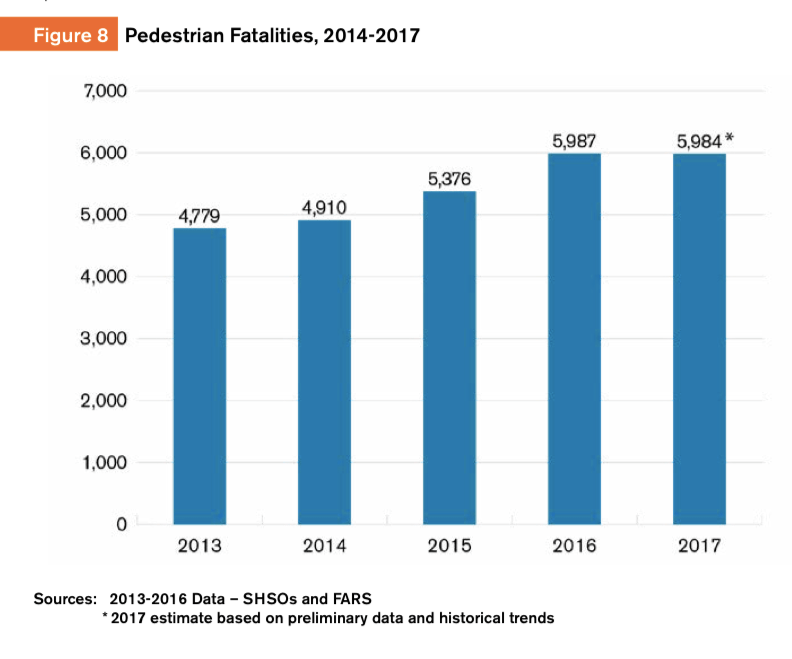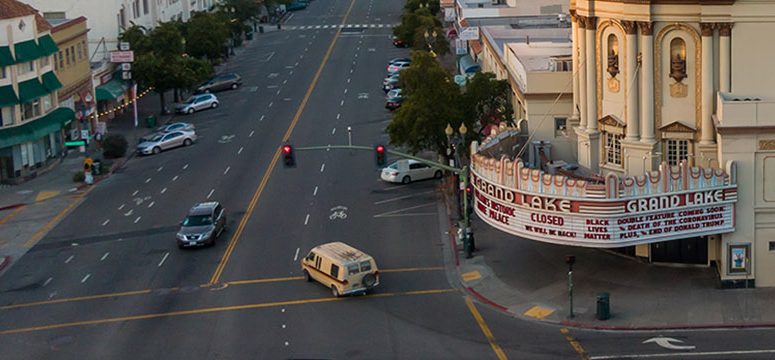America isn’t making progress on pedestrian safety, with people on foot accounting for a steadily rising share of overall traffic fatalities.
In 2017, for the second year running, nearly 6,000 people were struck and killed while walking in the U.S., according to a new report from the Governors Highway Safety Association [PDF]. The pedestrian fatality rate remains about 25 percent higher than where it stood just a few years ago.
Other than the increase in driving mileage, there are few solid explanations of the factors at work. GHSA suggests distraction by mobile devices plays a role, as may impairment by marijuana, with pedestrian deaths rising more in states that have legalized weed. Neither explanation has been studied with scientific rigor, however.
One thing that’s certain is that city governments are in position to act on the problem, because pedestrian deaths are concentrated in urban areas. In 2016 alone, pedestrian fatalities in the 10 biggest U.S. cities rose 28 percent. In Los Angeles, the increase was 45 percent.
To reduce pedestrian fatalities, GHSA says states and local governments should focus on the following three areas.
More separation of pedestrians from motor vehicles
Basic pedestrian infrastructure like sidewalks is in surprisingly short supply in many cities. Simple additions like median pedestrian islands can make street crossings safer and protect people on foot from turning drivers. GHSA also recommends timing traffic signals to give pedestrians more time to cross streets without interference from turning drivers.
Better visibility
Three-quarters of pedestrian deaths occur at night when visibility is reduced. GHSA recommends investing in better street lighting, more high-visibility crosswalks, and flashing beacons at crosswalks to make people walking more visible to motorists.
Reduce lethal motor vehicle speeds using engineering and enforcement
Fast driving increases the risk of striking pedestrians and makes severe injuries or fatalities more likely in the event of a crash.
To curb lethal motor vehicle speeds, GHSA recommends redesigning roads with bike lanes, speed bumps, narrower rights-of-way for cars, and automated speed enforcement.






